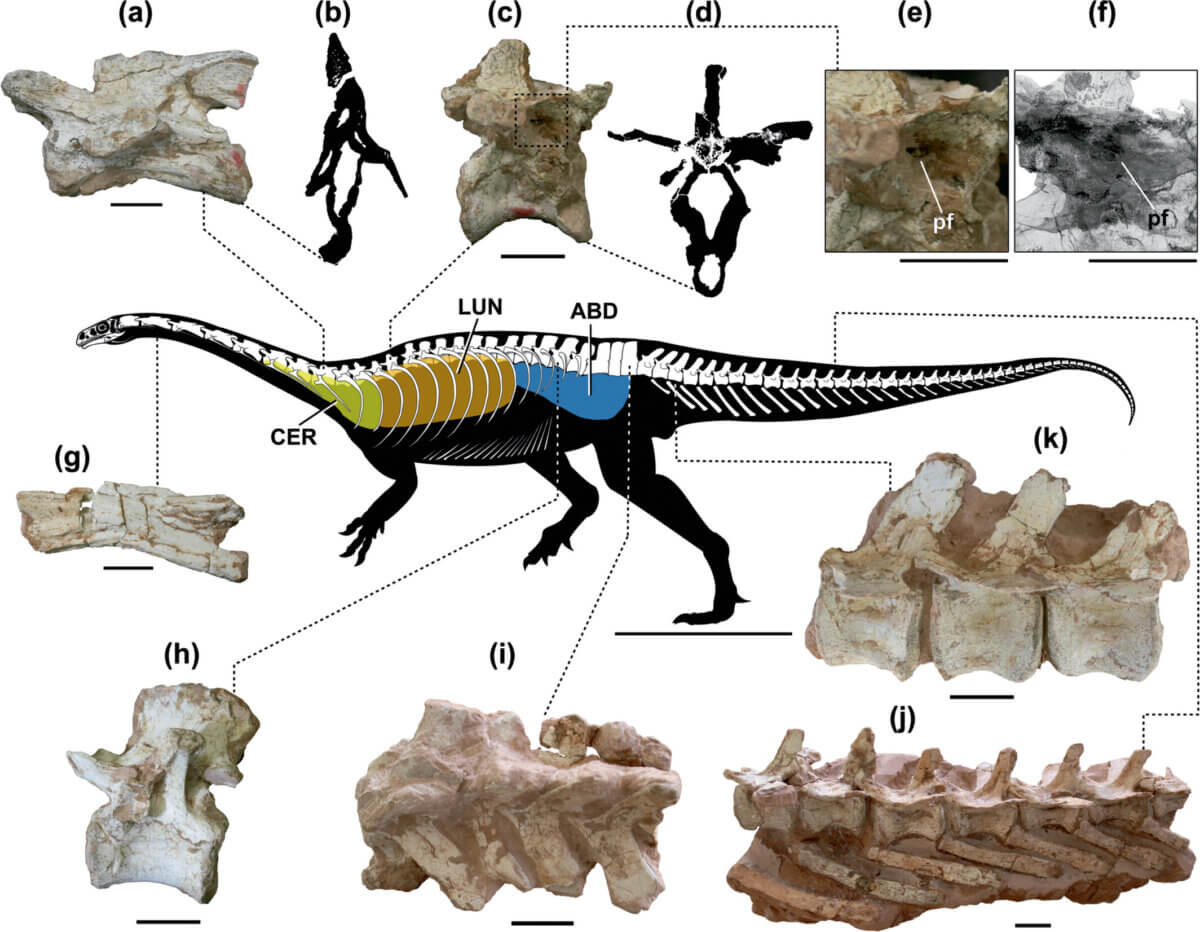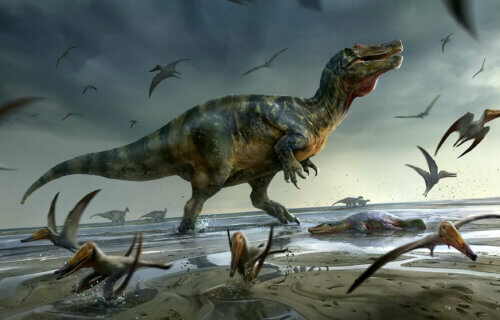SÃO PAULO, Brazil — How did dinosaurs go from small creatures to colossal giants? Researchers at the State University of Campinas (UNICAMP) in São Paulo State in Brazil believe they finally have the answer. In a new study, they explain that the air sac structures in the ancient dinosaur Macrocollum itaquii are the key to understanding the evolution of dinosaurs that continue to captivate our imagination.
Macrocollum itaquii, which roamed South Brazil approximately 225 million years ago, is the oldest dinosaur ever studied with air sac structures. These bone cavities, also found in modern birds, played a vital role in helping dinosaurs capture more oxygen, regulate body temperature, and survive the harsh conditions of their time. It’s these adaptations that allowed some dinosaurs, like the mighty Tyrannosaurus rex and Brachiosaurus, to grow into massive creatures.
“Air sacs made their bones less dense, allowing them to grow to more than 30 meters in length,” says Tito Aureliano, lead author of the study, in a media release.
The research, conducted as part of Aureliano’s PhD, sheds light on how the largest dinosaurs of their time evolved from being merely one meter long to reaching astonishing lengths. The study was part of the broader project “Taphonomic Landscapes” funded by The São Paulo Research Foundation (FAPESP) investigating the preservation and fossilization of organisms.

Fresia Ricardi-Branco, professor at UNICAMP and principal investigator of the project, highlighted the significance of M. itaquii in the context of dinosaur evolution.
“This dinosaur walked the Earth during the Triassic period and paved the way for the remarkable diversity we see in the Jurassic and Cretaceous periods. The presence of air sacs gave dinosaurs an evolutionary advantage over other groups, allowing them to diversify rapidly,” Ricardi-Branco explains.
The recent discovery challenges previous assumptions about air sac evolution. The team found internal pneumatic chambers in M. itaquii, a new type of tissue with an intermediate texture that they propose to call “protocamerate.” This finding contradicts the widely accepted hypothesis that air sacs evolved from camerate to camellate structures. The researchers also discovered that air sacs existed in the cervical and dorsal regions of the dinosaur’s spine, contrary to previous theories suggesting they only appeared in the abdominal region.
“It seems that evolution experimented with different forms until it arrived at the definitive system, where air sacs spanned from the cervical region to the tail. It was not a linear process,” explains Aureliano.
By uncovering the role of air sacs in dinosaur evolution, this study provides invaluable insights into the extraordinary world of these prehistoric creatures. The discovery of M. itaquii’s unique anatomical features revolutionizes our understanding of dinosaur development, paving the way for further exciting revelations about their ancient existence.
The findings are published in the journal Anatomical Record.
You might also be interested in:
- What if the dinosaurs hadn’t gone extinct? Why our world might look very different
- Biggest meat-eating dinosaur that ever lived hunted underwater!
- T-rex fossil reveals dinosaur from 68 million years ago likely had a terrible toothache!


Oxygen levels were significantly higher 65 million years ago. Key reason animals and plants got so big. Raise the free energy, increase the size of life.
The ultimate answer for dinosaur gigantism? It’s detailed in my international book TOO BIG TO WALK, from Harper Collins – and through Amazon.
You mean living creatures adapt to the constantly changing environment?
You don’t say.
Somebody tell the climate change lunatics.
Or maybe the earth was originally surrounded by an outer water canopy that blocked UV rays and created a pressurized, oxygen-dense atmosphere heavy enough for pterodactyls to fly.